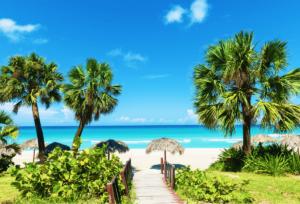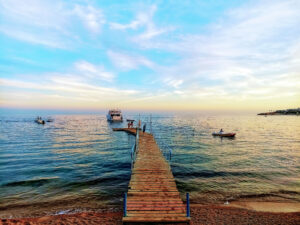For a country of its modest proportions Tunisia has a surprisingly varied climate and landscape. With a sandy coastline that has been tempting beach bunnies away from European resorts for many a year now, a surprisingly lush northern area of lakes, mountain ranges and plains and a substantial strip of the Saharan Desert, it’s clear that this is not a destination with a simple, one-size-fits-all packing regime. So if you’re all geared up for a Tunisian holiday this year, here’s our guide to where to head and when to go in order to make the most of that dazzling climate…
When is the best time to go to Tunisia?
Broadly speaking, Tunisia’s climate is not too far removed from most of the Mediterranean, but remember this is still Africa, so summers can get scorching hot, with average temperatures reaching well over 30°C for July and August. Rain is not unheard of, particularly in spring and autumn, so pack accordingly.
Tunisia in spring and autumn
Spring is possibly the safest bet – aim for the months of March and April to enjoy plenty of sunshine without subjecting yourself to the extreme heat (temperatures average in the early 20s). Along with equally mild temperatures, many holiday makers are drawn to Tunisia in the autumn when they can witness the country’s annual date harvest. October is traditionally the wettest month, when you can expect an average of around a day’s rain every four days.
Tunisia’s beaches
Tunisia’s coast typically enjoys around 13 hours of daily sunshine, with sea breezes bringing some welcome relief, especially on the popular Cap Bon peninsula where resorts such as Hammamet, Sousse and El Haouaria blooming with eucalyptus and palm trees have earned it the moniker of ‘the garden of Tunisia.’
Tackling the desert
For many, a camel trek into the desert, savouring the vast expanse over a simple camp fire and sleeping under the stars is a must-do Tunisian travel experience. Almost half of the country is swallowed up by the Saharan Desert, and conditions can be especially unforgiving, with the mercury hitting up to 50°C and northeasterly winds frequently whipping up sandstorms from January to May. Conversely temperatures tend to plummet come night fall, when is not uncommon in winter to reach sub-zero levels. The Sahara also experiences the Sirocco wind, also known locally as the ‘chili’, a hot, dry, dusty wind channelled through Saudi Arabia, which lends the heat further intensity in spring. With this in mind, the Sahara is best experienced between October and April when temperatures are at their most tolerable. Whatever time of year you travel to Tunisia, the unreal landscapes and thronging souks here capture the imagination like few other places. Do you have any tips for the best time to visit Tunisia? Share your experiences in the comments below!






